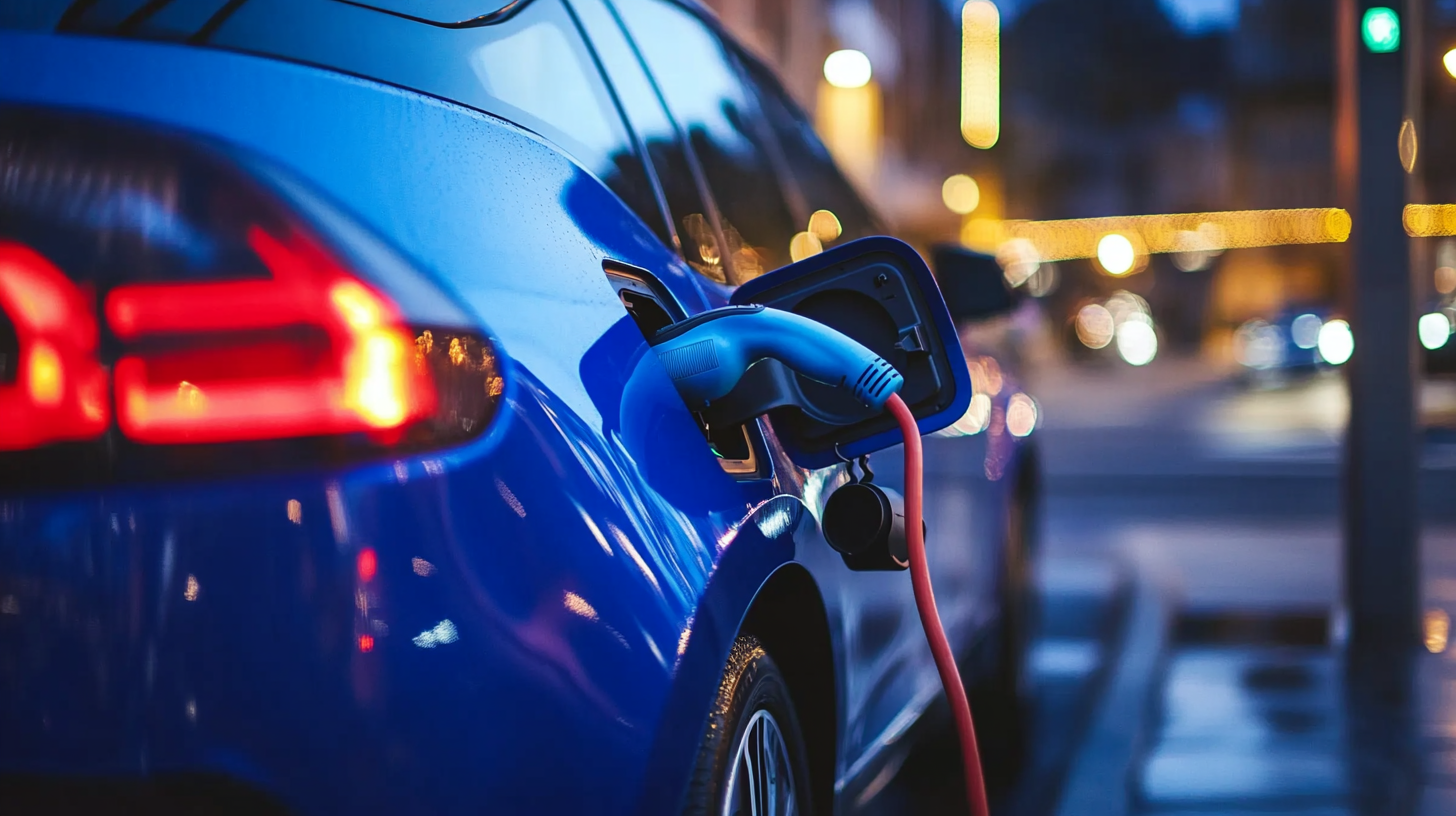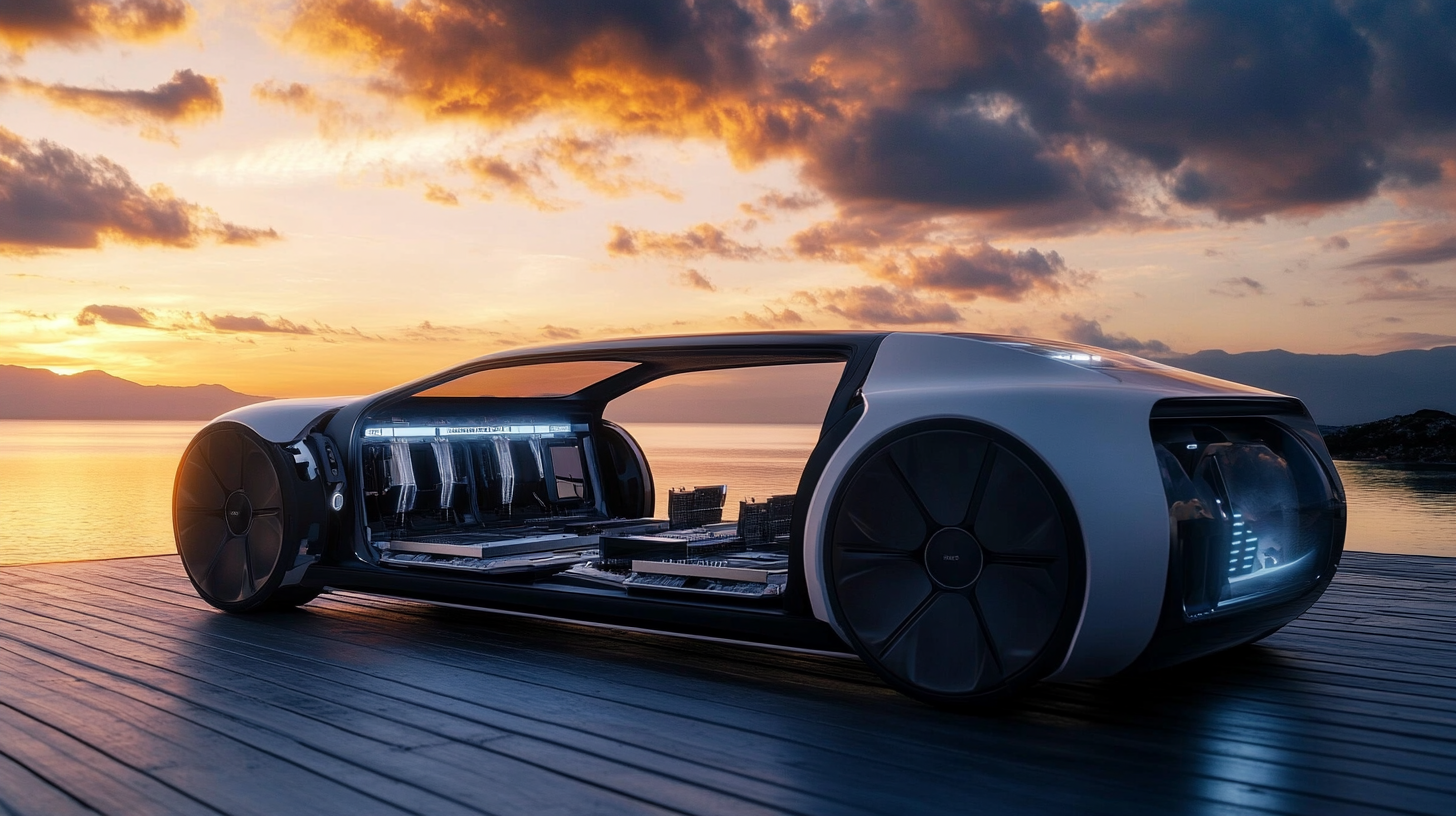2025 Car Battery Innovations: A Comprehensive Checklist for Global Buyers
You know, the automotive world is really changing fast, especially with all this electrification happening. Car batteries are becoming super important for both drivers and manufacturers. A report from Bloomberg New Energy Finance shows that by 2040, we could see the global electric vehicle (EV) market hitting around 54 million units a year! That’s a huge jump in the demand for better battery tech. For anyone thinking about buying a car battery, it’s really key to stay in the loop about what’s new in battery innovations, right?
Looking ahead to 2025, there are some exciting breakthroughs coming up that could totally change the game for car batteries. One big thing is solid-state battery tech — it’s been mentioned in reports by the International Energy Agency that this could actually double the energy density compared to the lithium-ion batteries we have now. That’s pretty cool! As more folks want efficient and eco-friendly energy options, getting a grip on these new developments will help them make smart choices when they're shopping around for batteries. So, this list is here to help buyers worldwide understand what key features and developments to think about before diving into the ever-evolving car battery market!

The Future of Electric Vehicle Batteries: Key Trends for 2025
Hey there! So, have you heard about the changes coming to the electric vehicle (EV) battery scene? It’s all set to get super interesting by 2025, thanks to some really cool technologies and new regulations that are all about making our transportation more sustainable. One big trend right now is that cobalt prices are skyrocketing – it’s a clear sign that demand is booming in the EV battery market. Just last month, reports showed that for automotive use, cobalt sales shot up an incredible 120%, hitting $152.4 million. That’s the highest it’s been since December 2022! It really highlights just how crucial cobalt is for improving battery performance and durability. Now, in light of how quickly things are changing, there are new national guidelines for EV batteries rolling out soon. They’re set to take effect on July 1, 2026, and they’re pretty serious about safety – especially when it comes to thermal management. Basically, batteries will need to show they can handle overheating situations without catching fire or exploding, and they'll also have to alert users in emergencies. These tough regulations really show that there’s a push toward keeping consumers safe and making the EV industry more environmentally friendly. On top of all this, there are some exciting advancements in battery tech, especially with solid-state batteries. They are expected to cut costs and perform even better. The market for these is predicted to grow quite a bit, pointing to a major shift in the industry towards lighter and more energy-efficient materials. As big manufacturers ramp up production and start focusing on recycling more, there’s definitely a trend toward creating a closed-loop system for battery materials. This means that the future for electric vehicle batteries might just be not only cutting-edge but also eco-conscious, really driving the shift to greener tech!

Solid-State Batteries: The Next Leap in Automotive Energy Storage
You know, the automotive industry is really about to change in a huge way with solid-state batteries coming onto the scene. These new batteries are a game-changer when it comes to energy storage, and honestly, they could make electric vehicles (EVs) a lot more appealing. So, unlike those old lithium-ion batteries we’ve been using, solid-state ones use a solid electrolyte, which not only boosts energy density but also makes things a lot safer. A report from the International Energy Agency (IEA) even mentions that solid-state batteries could take energy density past 300 Wh/kg—compared to around 250 Wh/kg for the best lithium-ion batteries out there right now. That kind of leap means EVs will be able to go further on a single charge, which is super important for getting more people on board with electric cars.
And get this: solid-state batteries are also known for their awesome thermal stability, which means there’s way less chance of those scary battery fires we've seen with current technologies. A study from BloombergNEF suggests that as these batteries become more mainstream, we could see a big drop in battery pack costs. They predict that by 2030, prices might fall to between $60 and $75 per kWh. If that happens, electric vehicles will become a lot more wallet-friendly, opening up the market to all kinds of buyers. This tech leap doesn’t just amp up performance; it’s also a step toward more sustainable cars, helping to cut down carbon emissions in transportation.
As more folks start thinking about investing in this changing automotive world, it's super important to keep up with these innovations. Switching to solid-state batteries isn’t just a boost in battery tech; it’s really a whole new way of thinking about how cars get powered. Everyone—from industry folks to regular buyers—should get ready for this exciting transformation, because it could really shake up the electric vehicle market and impact buying choices all over the globe.

Recycling and Sustainability: Innovations Driving Battery Circularity
You know, with the automotive world really moving towards electric vehicles, the need for battery recycling and sustainability is becoming super important—more than ever, in fact! These days, it's not just about how well batteries perform or how efficient they are. A lot of innovation is now taking a hard look at circular economy principles, which is pretty cool. Thanks to new recycling methods, we’re actually starting to see how we can recover valuable stuff like lithium, cobalt, and nickel from used batteries. This is huge because it softens the blow of what mining does to the environment, plus it helps make manufacturing more sustainable, relying less on new materials.
And it doesn’t stop there! Companies are really diving into research to boost battery lifespans, making sure they can be reused after their time in electric vehicles. Take second-life applications, for example! We’re seeing these EV batteries being used as energy storage systems for homes and businesses. Not only does this mean the batteries stick around longer, but it also helps stabilize the renewable energy supply by storing up excess energy for when we really need it.
On top of all that, advancements in battery design are leading the charge (pun intended!) towards better disassembly and recycling when those batteries finally reach the end of their life. With things like modular designs and using fewer mixed materials, it's becoming way easier for recyclers to break down batteries and get back essential bits. So, when you're out shopping, it’s nice to know you can make choices that support a more sustainable future—that means more people want products that are not just high performers but also kind to Mother Earth.

Battery Charging Infrastructure: Meeting the Demands of 2025 EV Adoption
Accelerated EV penetration; strong charging infrastructure for EVs is not the thing to be underrated. The forecast indicates an avalanche of sales of EVs by 2025 which will necessitate not only the qualitative but also a quantitatively enlarged charging network across the built and rural landscape. The charge point will no longer rely on quantity alone, but also consider accessibility and technology. Most of all, to meet the differing consumer requirements, the location of charging stations should be strategic in highly frequented areas like shopping centers, offices, and residential across towns so that drivers can always have access.
In addition, change is passing through the charging technology itself. Fast-charging solutions will soon be essential to replenish significant battery life in a short duration, a necessity to alleviate range anxiety particularly among prospective EV owners. In other words, qualifying charging stations will have provisions for advanced charging options to accommodate different EV brands, both mainstream and those that are newer to the market. Moreover, integration of charging infrastructures with renewable energy sources will be increased reliability and decreased cost for charging, thereby providing an additional advantage in the case of sustainability.
Collaboration between governments, private enterprises, and technology providers is paving the way for seamless charging accessibility and usability for end users. Initiatives would include a comprehensive payment system, real-time availability tracking through mobile applications, and effective customer support. Such initiatives will ensure that switching barriers for customers using ICEs to EVs are lowered. Though the world's market appears to be ready for the EV fit, charging infrastructure would serve as the basement for successful transition to a greener automotive future.
Cost Reduction Strategies: How Manufacturers Are Reducing Battery Prices
You know, the race to dominate the global battery market is heating up—especially between the U.S. and China. And guess what? Cost reduction strategies are becoming super important for manufacturers. Right now, China is pretty much in the driver’s seat when it comes to lithium-ion battery production, which, let’s be honest, is essential for all sorts of gadgets—think electric vehicles, smartphones, and laptops. The pressure is really on American companies to step up their game and find ways to work more efficiently. It seems like embracing new tech could be the game-changer they need to stay competitive. Manufacturers are out there tinkering with different materials and processes to cut costs without skimping on quality.
Now, if we look at what the Chinese manufacturers are doing—take CATL, for example—they’re really nailing it with their aggressive pricing and savvy supply chain management. They’re pulling in profits that are, like, blowing everyone’s expectations out of the water. This not only helps them keep their market strong but also makes life tougher for U.S. companies trying to find their footing in a more competitive landscape. As they dive into new technologies, American manufacturers need to focus not just on cutting costs but also on enhancing battery performance and sustainability. It’s a chance for them to really shake things up and redefine their standing in the global market.
